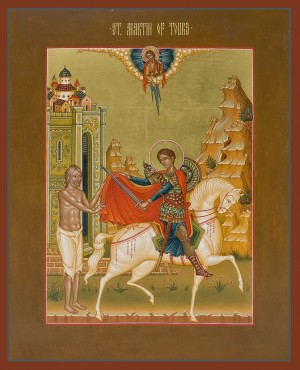My experience of Eastertide 2018 was enhanced by the book, Resurrecting Easter: How the West Lost and the East Kept the Original Easter Vision, by John and Sarah Crossan. John, a biblical scholar and professor emeritus at De Paul University, and Sarah, a visual artist and photographer, have combined their talents for a book filled with beautiful pictures. However, as the prologue states, “The result is not texts illustrated with imagery, but imagery discussed by texts…These images are quite simply visual theology.” Despite its origin in bygone eras, this imagery is extremely powerful and meaningful in modern times. Moreover, the book’s message relating to nonviolence in the last chapter was totally unexpected.
The idea for this book was prompted by a visit to an eleventh century church in Turkey where explanatory signs in multiple languages were displayed below a fresco of the life of Christ, entitled Anastasis (the Greek word for resurrection, or up-rising). In the fresco, Christ is trampling Hades, the gatekeeper of the kingdom of the dead, breaking his gates and locks. Christ is grasping the arm of Adam, with Eve behind, pulling them from sepulchers and leading them out. While the English text simply uses the word, anastasis, in the Turkish text, it is “Jesus’ Descent to Gehenna”, in French, “The Descent to Hell” and in German, “Jesus’ Travel to the Kingdom of the Dead”. It seemed strange to the Crossans that three languages would use descending when anastasis is about ascending.
Thus began fifteen years of research and travel around the Mediterranean, the Middle East, Eastern Europe and the Vatican. Icons, mosaics, psalters, scrolls, carved sarcophagi, and frescoes dating from the fourth century to the Renaissance are examined to show the evolution of the artistic presentations of the resurrection. Although this story, told as a travelogue, comprises most of the book, it would be foolish of me to attempt to summarize the stages of this prodigious work. The result is the emphasis on the resurrection of a solitary glorious Christ favored by churches in the West, while in the East, the imagery is a communal or universal resurrection with Christ freeing humanity from death.
In the twelfth chapter, Crossan reminds us of the stories about Elijah and Enoch, where there is a rising from earthly life to heaven, as well as the mysterious disappearance of Moses from his tomb. In Roman mythology, Romulus disappears from his tomb and reappears in a shining state. All these events Crossan calls singular ascensions. That is why Christ’s Resurrection with its communal nature, where He leads out the souls trapped in the kingdom of the dead, has a unique feature.
It is amazing that the pivotal element of faith, the Resurrection, is not described in the gospels explicitly. Christ appears in His resurrected state, not in earthly form but in a glorious body after the event. St. Paul writes, “If there be no resurrection of the dead, then is Christ not risen. If Christ has not been raised, then our preaching is in vain and your faith is in vain.” (1 Cor 15:13-14) It occurred to me that if we use the imagery of a communal/universal event, we can experience a fuller meaning of statements in the Catholic Catechism. “The Paschal mystery has two aspects: by his death Christ liberates us from sin; by his Resurrection, he opens for us the way to new life.”(para. 654) Then in paragraph 1002, Christ raises us up on the last day, but “it is also true…that we have already risen with Christ by virtue of the Holy Spirit, Christian life is already now on earth a participation in the death and Resurrection of Christ.”
The last chapter brings the significance to our times. A scholarly treatise on the Easter vision of West and East now probes the “question of meaning”. This Eastern interpretation depicts the conquest of death, the deliverance of humanity (symbolized by Adam and Eve), and “the liberation by, with and through Jesus.” Yes, there is a Jesus in a glorious state, surrounded by a shining almond-shaped aura (mandorla), but He has visible wounds and carries a ceremonial cross. Crossan posits that the visual theology can be seen as a parable. Christ dies as a result of nonviolent resistance against the Roman state. Rome represents a typical center of civilization, where the escalating spiral of violence is the norm which continues to the present day. Does the parable give clues about any intervention to stop the spiral? The author’s answer echoes the message of Pax Christi. “The universal resurrection is clear that we are all involved in the process. Nonviolent resistance is alone capable of saving us from species death by detouring human evolution along a different trajectory from the violent spiral of inevitable self-destruction.” I say, “Amen".
---Luann Mostello




